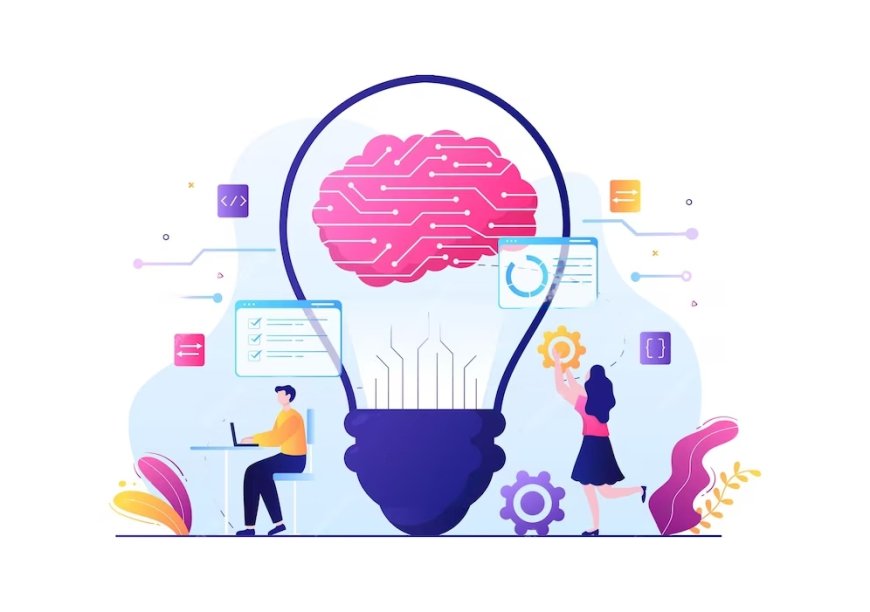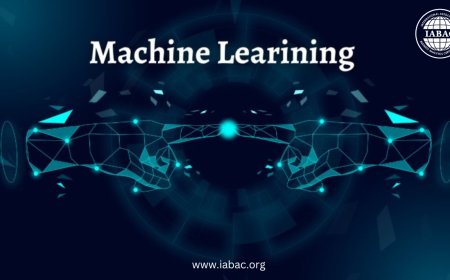Exploring the Creative Side of Machine Learning
Unlock the artistic potential of machine learning with our guide to Exploring the Creative Side of Machine Learning. Discover how AI can inspire innovation and artistry in a tech-driven world.

Machine Learning (ML), a subset of artificial intelligence, is often associated with tasks such as data analysis, pattern recognition, and prediction. While these applications are undeniably powerful and transformative, there exists a lesser-known facet of machine learning that is equally intriguing and promising—the creative side of machine learning.
Unleashing Creativity with Generative Models
Generative models, a class of machine learning algorithms, have revolutionized the creative landscape by offering machines the power to produce original content. At the forefront of this creative revolution are Generative Adversarial Networks (GANs), a remarkable class of generative models. GANs operate through a fascinating interplay between two neural networks: the generator and the discriminator. The generator's role is to produce synthetic data, be it images, text, or music, while the discriminator evaluates the authenticity of this content. Through a dynamic adversarial process, the generator continually refines its output to become increasingly convincing and realistic. This adversarial feedback loop has given birth to groundbreaking applications in fields like art, where AI-generated paintings and sculptures challenge our notions of authorship and creativity.
In the world of fashion, GANs can generate new clothing designs or help blend styles to create entirely novel aesthetics. In literature, these models can be used to automatically generate creative writing, poetry, and even entire novels. This intersection of machine learning and creativity transcends traditional boundaries and expands the horizons of what's possible, provoking discussions about the nature of creativity, authorship, and the potential for human-machine artistic collaboration. Generative models are not just tools; they are the creative catalysts of a new era.
The Artistic Merit of Machine-generated Content
The Artistic Merit of Machine-Generated Content is a concept that raises intriguing questions about the nature of creativity and the role of artificial intelligence in artistic endeavors. When we discuss artistic merit in the context of machine-generated content, we are essentially evaluating the quality, meaning, and value of art produced by algorithms. It's a conversation that explores the intersection of technology and creativity, blurring the lines between human and machine contributions to the art world.
One key point of discussion revolves around the authenticity of machine-generated art. Does art created by algorithms possess the same artistic merit as that produced by human hands and minds? Some argue that it does, pointing to the unique aesthetic qualities and innovative ideas that emerge from the creative algorithms. However, others contend that true artistic merit stems from the intention and emotional depth of human creators, something machines may lack.
Machine-generated art also challenges traditional notions of authorship. In the case of AI-generated art, who is the true artist—the human who programmed the algorithm, the algorithm itself, or both in a collaborative sense? This debate forces us to reconsider established definitions of authorship and the creative process.
Music and Machine Harmony
Music has always been a deeply human form of artistic expression, but the introduction of machine learning into the world of music has opened up new frontiers and possibilities. The synergy between music and machine learning has given rise to what can be termed "Music and Machine Harmony." This concept revolves around the collaboration and co-creation between human musicians and AI algorithms.
In the realm of music composition, machine learning has become a powerful tool for artists and composers. Algorithms can analyze vast datasets of existing music, identifying patterns, harmonies, and structures. Armed with this knowledge, they can then generate entirely new musical compositions. This process isn't about replacing human musicians but rather assisting them in their creative process. AI tools can help artists overcome creative blocks, suggest novel chord progressions, or even mimic the style of a particular composer, offering inspiration and fresh ideas.
Music and Machine Harmony are also evident in the development of musical instruments and tools. AI-driven musical instruments can generate sounds and melodies that were previously impossible to achieve with traditional instruments. This opens the door to experimental and avant-garde music that pushes the boundaries of what music can be. Musicians and composers can harness these tools to create unique sonic experiences and explore uncharted territories in music.
Democratizing Creativity through Accessibility
"Democratizing Creativity through Accessibility" is a concept that emphasizes the role of technology, particularly machine learning and artificial intelligence, in making creative tools and processes more inclusive and accessible to a broader audience. Here are some explanations about this topic:
Access to Creative Tools: Traditionally, creative processes, whether it's in the realms of visual arts, music, or writing, require a certain level of expertise and access to specialized tools. With the advancement of machine learning, creative software, and tools are becoming more user-friendly. This means that individuals with limited artistic skills or technical knowledge can engage in creative activities. For example, user-friendly AI-powered image editing tools can help people create impressive visual content without extensive design experience.
Lowering the Barrier to Entry: The democratization of creativity aims to lower the barriers to entry in creative fields. It enables individuals who may not have had the resources or education to engage in artistic endeavors to participate in the creative process. This has the potential to diversify the voices and perspectives within the creative community, leading to a richer and more inclusive creative landscape.
AI-Powered Assistance: Machine learning can assist creators by providing inspiration, suggesting creative ideas, and helping users overcome creative blocks. AI-powered writing assistants, for instance, can offer recommendations, grammar corrections, and generate ideas, making the writing process more accessible to a wider range of people.
Enhancing Creative Expressions: For those with creative skills, machine learning tools can enhance and expand their creative expressions. Musicians can use AI-generated compositions to experiment with new musical styles or collaborate with AI to create novel harmonies. Visual artists can incorporate AI-generated elements into their work, resulting in unique and imaginative pieces.
Ethical Considerations and the Future
Ethical considerations play a pivotal role in the development and application of machine learning in the creative domain. As we explore the creative side of machine learning, it's important to address these ethical concerns to ensure that technological advances align with societal values and respect fundamental principles. Here, we delve into some of the key ethical considerations and their implications for the future
Intellectual Property and Ownership
-
As AI systems generate creative works, questions arise about ownership and intellectual property rights. Who owns the AI-generated art or music? Is it the creator of the AI model, the user who initiated the generation, or the AI itself?
-
The future will likely require updates to copyright laws and regulations to account for AI-generated content, balancing the interests of creators, users, and the public.
Bias and Fairness
-
Machine learning models are trained on large datasets that may contain biases, leading to potential biases in the generated content. This raises concerns about perpetuating existing societal biases through AI-generated art or music.
-
Ethical considerations demand that efforts be made to mitigate bias and promote fairness in creative AI applications. Diverse and representative training data and careful algorithm design are crucial.
Transparency and Accountability
-
The 'black-box' nature of some machine learning models makes it challenging to understand the decision-making process of AI-generated content. This lack of transparency can be a barrier to accountability.
-
The future will likely involve the development of explainable AI systems and accountability frameworks to ensure that AI-generated content aligns with ethical standards.
Responsible Use
-
Ethical considerations extend to how AI-generated content is used. There's a need to establish guidelines and responsible practices for the application of AI in art and music to avoid misuse.
-
Ethical frameworks should address potential issues like deepfakes and AI-generated content that could be used for malicious purposes.
Human-AI Collaboration
-
The future of creativity may involve extensive collaboration between humans and AI. Ethical considerations include questions about the degree of AI involvement and whether it complements human creativity rather than replacing it.
-
Ensuring that human agency and creative input remain central is an ethical challenge to be addressed.
Privacy
-
The data used to train machine learning models for creative purposes often includes personal information. Protecting the privacy of individuals whose data is used is a critical ethical concern.
-
Stringent data protection and privacy measures will be essential to ensure that creative AI applications respect individuals' rights.
The creative side of machine learning offers a captivating journey into the intersection of technology and human expression. From visual arts to music and beyond, machine learning's ability to generate novel, imaginative content is reshaping our understanding of creativity. As we navigate this evolving landscape, embracing the collaborative possibilities of human-AI partnerships, we embark on a quest to redefine the boundaries of what is achievable in the realm of creative expression.











































